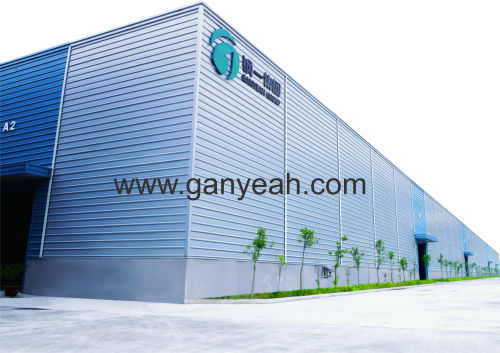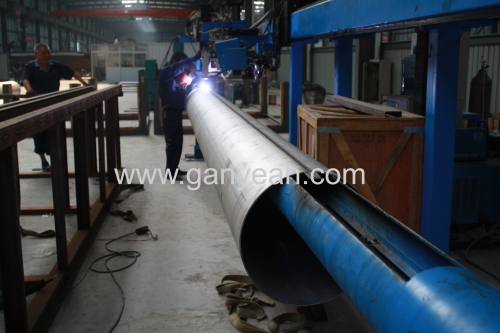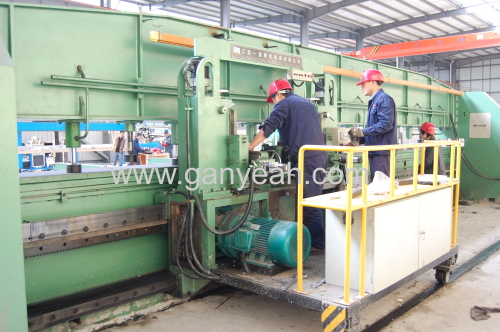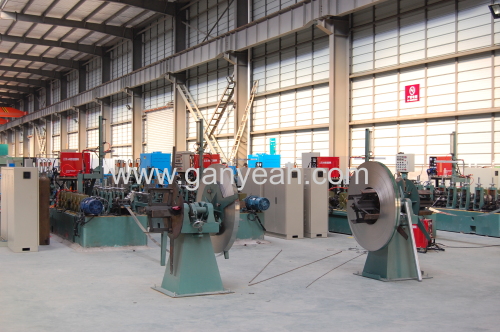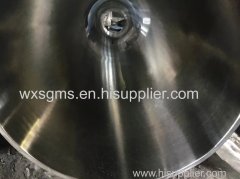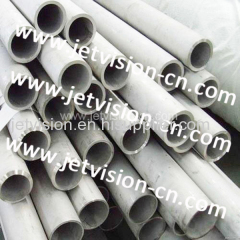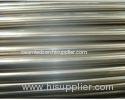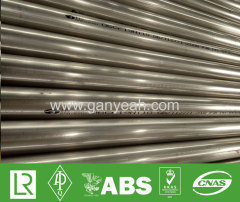
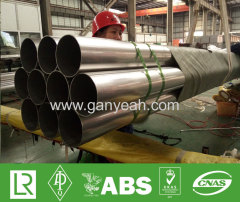
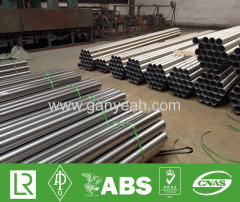
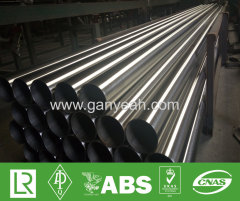
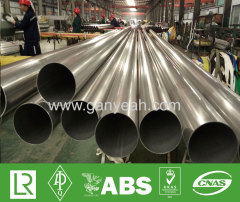
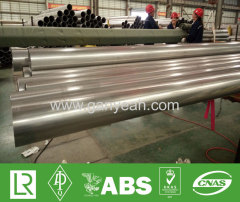
SS 304 Pipe Sanitary
| Min. Order: | 500 Kilogram |
|---|---|
| Trade Term: | FOB,CFR,CIF,EXW |
| Payment Terms: | L/C, D/P, T/T |
| Supply Ability: | 2000Ton/Month |
| Place of Origin: | Zhejiang |
Company Profile
| Location: | Lishui, Zhejiang, China (Mainland) |
|---|---|
| Business Type: | Manufacturer, Trading Company |
Product Detail
| Model No.: | 730640 |
|---|---|
| Means of Transport: | Ocean, Land |
| Brand: | Ganyeah |
| Grade: | SUS 304/304L/ 316L/347H/S32205/S32750 |
| Standard: | Astm a312/Astm a778/Astm a554/Astm a249/JIS G3463 |
| Inspection: | UT, ET, HT, RT |
| Section Shape: | Round |
| Certification: | API 5LC,DNV•GL, ABS, TUV, LR. |
| Length: | 6 m or as customers' request |
| Surface: | Pickling,annealing,polishing,bright |
| HS Code: | 730640000/730611000 |
| Origin: | China |
| Production Capacity: | 2000Ton/Month |
| Packing: | Plastic, Wooden Case, Others Seaworthy Packing |
| Delivery Date: | 15days |
Product Description
Introduction
Sanitary tubing and fitting types (referred to collectively as "piping") and the standards that regulate their use have evolved over the years by trial and improvement. Consequently, a great variety of SS 304 Pipe Sanitary and standards are in use today. This fact sheet briefly explains the most common sanitary piping and standards and how they are applied. A section with sources of sanitary piping materials is also included.
Materials
Stainless steel is the most common material used in SS 304 Pipe Sanitary . This metal has the advantage of cost, corrosion resistance and durability, relative to other materials. Table 1 shows some of the grades of stainless steel and their description. In general, the higher the grade, the better the corrosion resistance. Price increases with grade.
Surface finish
Description of surface finish of stainless steel components is often confusing, since different reference scales are commonly used, depending upon industry and custom. Two of the most important scales used to measure surface roughness are: Ra and grit. Ra is the "roughness average" specified in the ANSI/ASME standard B46.1-1985. The Ra value relates to an arithmetic average of the surface roughness as measured by the stylus motion of an instrument. For comparative purposes, an Ra of 4 corresponds to a "mirror" finish. In the dairy and food industry, surface finishes have traditionally been measured by grit. Grit is the number of abrasive grains per given area. The higher the grit number, the smoother the finish (similar to traditional sand-paper). Table 2 gives a guide for comparison of Ra and grit finish measurements. Comparison of grit to Ra finish is not exact and requires consideration of variable elements such as polishing equipment, materials and technique.
Electro-polishing is a finishing technique that results in a smooth surface due to a chemical-electrical treatment that is most often applied after mechanical polishing steps. Electro-polished piping usually carries the initials "EP" and has a superior, mirror-like finish.
SS 304 Pipe Sanitary is polished on the inside, as a minimum, since the product-contact surface should be smooth to prevent attachment of soils and microorganisms. Polished finishes on the outside of pip-ing are normally specified for appearance or to facilitate cleaning. Piping surfaces that are covered with insulation are often specified as unpolished. Industrial grade (mill finish) piping is frequently used for potable water, cleaning solutions or other applications where soil residues and microbial levels are low. Table 3 describes industry standard finish numbers commonly used for food and dairy tubing.
